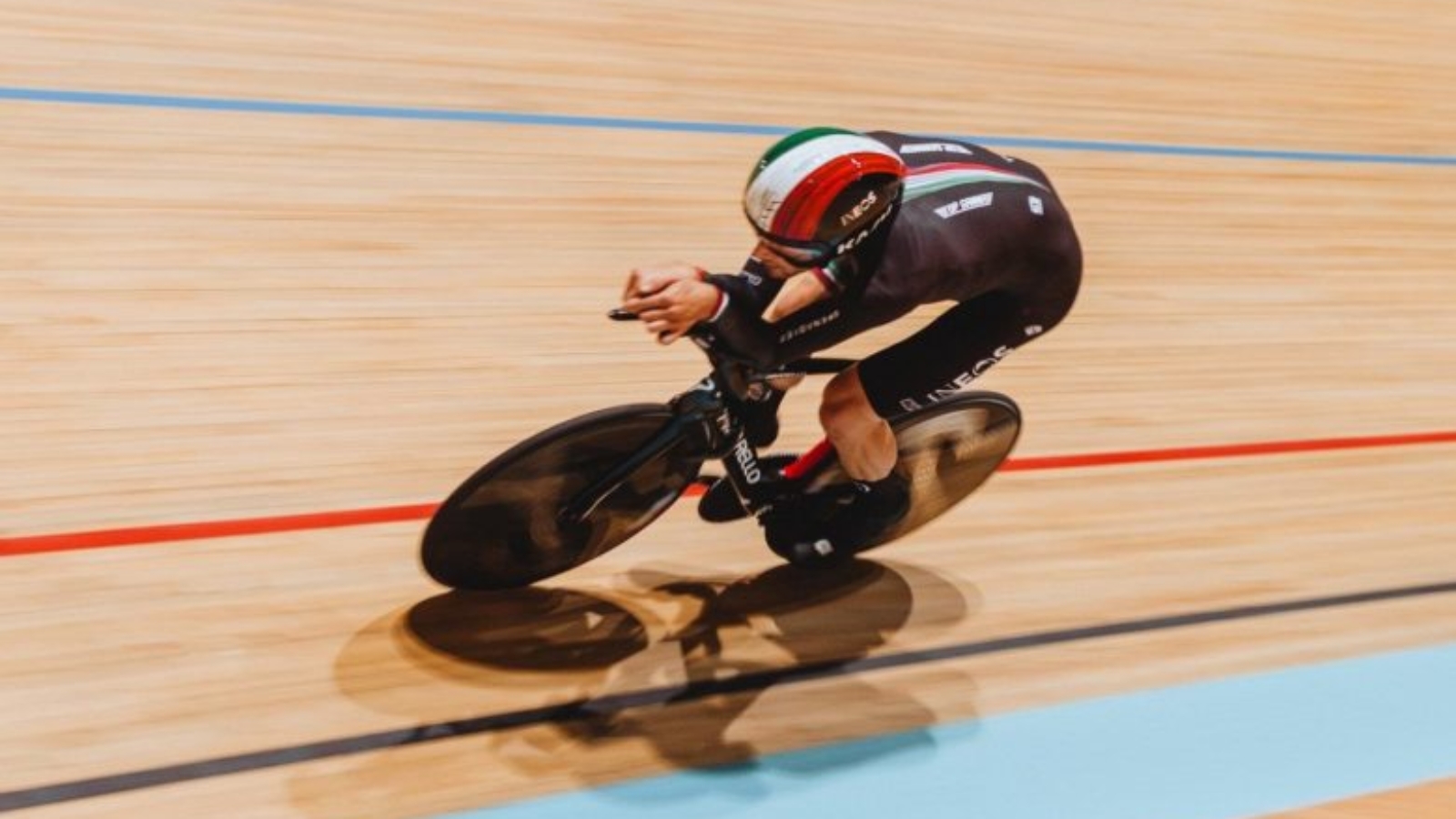Filippo Ganna, the 26-year-old cycling champion from Team Ineos, set a new hour speed world record, after covering 56.792 Km of track in 60 minutes at the Grenchen velodrome. The world record holder, Dan Bigham, set the previous record just last August 19th at 55.548 Km. How did Ganna do it? For sure his amazing talent and a lot of work but also thanks to a largely 3D printed Pinarello bike: the BOLIDE F HR 3D.
The BOLIDE F HR 3D has a 3D printed frame, designed specifically for Filippo Ganna and for his UCI Hour Record timed by Tissot attempt. It was 3D printed on an EOS M400 system. “We are always pushing the level of product design to new extremes to allow our champions to achieve their goals” commented Fausto Pinarello.
The BOLIDE F HR 3D has a 3D printed frame, designed specifically for Filippo Ganna and for his UCI Hour Record timed by Tissot attempt.
We are always pushing the level of product design to new extremes to allow our champions to achieve their goals”Fausto Pinarello
All cyclists always want to ride the best bike available, especially when it comes to aerodynamic performance and power transmission. Additive manufacturing has made its way into the cycling industry, even at high-end consumer levels, for both frames and accessories such as bike seats.
Manufacturing on Demand
But for this unique project, the demands were even higher than usual. This is why the new BOLIDE F HR 3D was actually designed around the rider, conforming to Filippo’s unique anatomy, to maximize both his comfort and overall aero performance.
This makes the BOLIDE F HR 3D the first and fastest high-performance 3D printed bike ever built. The concept behind it is to blend strength and stiffness with aero gains, relying on a production method that would allow for millimeter-perfect sizing.
Pinarello worked closely with both Filippo Ganna and the INEOS Grenadier’s team to create the bike. The HR bike’s frame and fork were designed to take advantage of additive-manufacturing-specific Scalmalloy, a high-strength Scandium-Aluminium-Magnesium alloy, developed by AP Works for advanced aerospace applications.

The new frame has been designed to reduce as much as possible the frontal area also taking advantage of the removal of the 3:1 UCI rule. There have been some substantial gains from making the wheel hubs as well as the bottom bracket (BB) narrower than normal. The BB was narrowed down to 54mm (from 70mm), the wheel hubs from 120mm down to 89mm on the rear, and from 100mm down to 69mm on the front.
You might also like:
Tetra Pak and Aectual 3D print recycled furniture: Aectual is taking recycled materials one step further than the recycling facility and is systematically creating high-quality products that retain, or exceed, their original value – proving the potential of large-scale upcycling, and demonstrating the direction in which fully circular design can take us.
* This article is reprinted from 3D Printing Media Network. If you are involved in infringement, please contact us to delete it.
Author: Davide Sher


 The BOLIDE F HR 3D has a 3D printed frame, designed specifically for Filippo Ganna and for his UCI Hour Record timed by Tissot attempt.
The BOLIDE F HR 3D has a 3D printed frame, designed specifically for Filippo Ganna and for his UCI Hour Record timed by Tissot attempt.
Leave A Comment